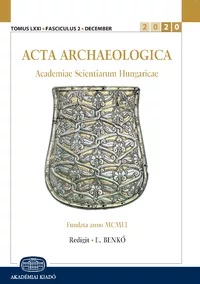Raw glass and glassworking practices beyond the Roman limes: A case study of the late Roman workshop in Komarov (Middle Dniester, Western Ukraine)
Raw glass and glassworking practices beyond the Roman limes: A case study of the late Roman workshop in Komarov (Middle Dniester, Western Ukraine)
Author(s): Olga S. Rumyantseva, Alexandr Trifonov, Dmitry Khanin, Maria Chervyakovskaya, Vasiliy ChervyakovskiySubject(s): Archaeology, Ancient World
Published by: Akadémiai Kiadó
Keywords: raw glass; chemical composition; late Roman period; Eastern Europe; recycling
Summary/Abstract: The chemical composition of 42 samples of raw glass from the Komarov settlement on the Middle Dniester was studied by means of SEM-EDS, EPMA and LA-ICP-MS analyses. We singled out groups of colourless glass of Levantine and Egyptian origin, the chronology of which indicates that the workshop could be dated to the 4th – early 5th century. The data on the chemical composition of the raw glass do not confirm that glassmaking industry existed here in an earlier period, as was previously believed. The manufacturing in Komarov combines the use of high-quality perfectly decolourized raw glass with intensive use of cullet, which might point out either different levels of the glassware manufactured here, or selective recycling. The characteristic features of the workshop's raw glass supply are the absence of the HIMT glass and late spread of antimony-decolourized glass.
Journal: Acta Archaeologica Academiae Scientiarum Hungaricae
- Issue Year: 74/2023
- Issue No: 1
- Page Range: 51-69
- Page Count: 19
- Language: English
- Content File-PDF

